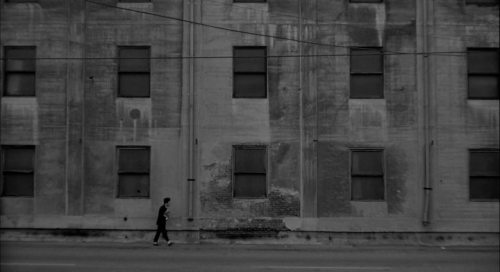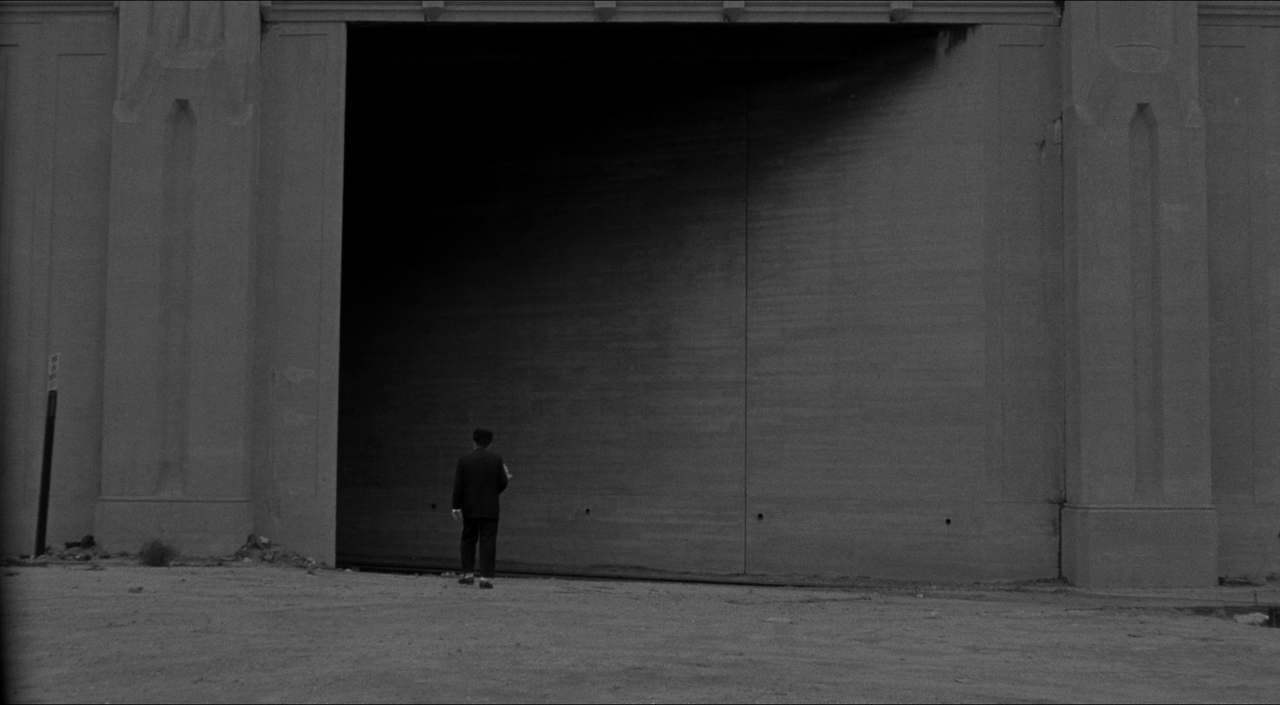Scary, ridiculous, and daring: The best B-horror movies
We delved into the world of horror to tell you about its coolest representatives.


Fall is the perfect time to watch a horror movie on a cool, dark evening. We're all familiar with the hype and gutsy new wave horror movies (we've covered some of them in the "10 best summer movies - Filmustage Edition" or "10 best directorial debuts"), but we always thought it was cool to know the roots, to see iconic horror movies from the past that have certainly influenced modern masterpieces. That's why we've put together a selection of Filmustage's most beloved B-movie horror films for you. Important note: we didn't select b-horror on the principle of second-rate - our priority was to choose those films that combined a low budget as well as great grit.
Disclaimer: our blog has no academic purpose behind it, because we are viewers just like you. Filmustage does not aim to educate, but to gather a close-knit film community around us. We can be wrong about certain statements - and that is fine. We are open to discussion and criticism. The main thing is to love cinema and talk about it.
Each director has a different idea of how the script will look on the screen. That's why being able to create the image of your film in pre-production is extremely important. Visualise how you see all the elements in your script with Filmustage's Visual Reference board.
Art by @nadi_bulochka
Friday the 13th, 1980, dir. Sean S. Cunningham
Actually, if you watch this movie nowadays, it's obvious that it's nothing extraordinary. There are dozens of slashers like it these days. The main merit of “Friday the 13th” is that this picture was a pioneer along with such established standards of the genre as “Halloween”, “The Texas Chainsaw Massacre” and “A Nightmare on Elm Street”.
What made them stand out among the multitude of tawdry tropes on the same theme? Why were these four stories so beloved by the audience? With three of them everything is clear - Freddy, Michael Myers and Leatherface became truly cult characters, ensured the success of the films and spawned a huge number of sequels, remakes and other movies, most of which were saved only by the charisma of the main villain. But it's not so clear-cut with “Friday the 13th”! After all, Jason, the character with whom the title of the whole series is instantly associated, actually appears only for a few seconds on the screen. Maybe the elaborate murders were the reason for the popularity of the movie? We all know that in slasher films, the characters should die as gruesome and, most importantly, original deaths as possible. But the film does not have that either. So what is the secret of success?
For us, the originality of “Friday the 13th” lies in the ruthlessness and uncompromising nature of the writers. The first 20 minutes of the movie introduces us to the protagonists with one of the heroes getting a lot more attention. So you'd think she'd be the one to defeat the villain in the finale. But who do you think died first? Yes, that girl - and therein lies the whole movie, which proves that all genius stuff is simple. Director Sean S. Cunningham assembled an unknown but attractive cast, added sex, drugs, summer camp and a bloodthirsty killer. In the end, the film shows a spiteful attitude toward the characters' fates, and thus toward the audience, as we are left with nothing more to do than to watch silly teenagers die one by one.
The viewer gets so used to the madness on screen that it's even a little unclear why the very last scene had to be softened. It can be called one of the most original, pessimistic, yet funny scenes in the history of the genre.
Night of the Living Dead, 1968, dir. George A. Romero
George A. Romero worked with a limited film budget, only $114,000. The zombies in this film wear minimal makeup, the director had to save even on that. But such appearance adds to the creepiness - it seems as if the dead have just climbed out of the grave and still look like people.
In fact, he stuck to a movie called “The Last Man on Earth” (1964). It was essentially the story of a man who was left alone in a world of vampires. And that's where Romero took his basic concept from. In his film, the viewer first saw flesh-eating ghouls, which now are recognized as zombies.
But what is the very first real zombie movie “Night of the Living Dead”? It's a rather indie horror film that is most of the time dedicated not to zombies, but people. Curiously, Romero himself does not call the walking dead "zombies" in this film, but uses the word ghoul. When writing the story, the director was also inspired by the novel "I Am Legend", which later found its own film adaptation. In the future, Romero's followers will come up with different designations for the dead, but it is this classic film that can be safely called a pioneer in the prolific zombie horror genre.
George Romero paints a familiar picture of the dead: they move slowly and take in numbers. For the first time in cinema the director creates a bleak and pessimistic picture of the zombie apocalypse with no hope of survival.
For the first time, as much of this film does, a certain set of zombie abilities is formed: it is a mindless creature that cannot be stopped, but can be killed with a shot to the head (agree that most of the most popular zombie horror films still present zombies this way).
Thus, the scary and revolutionary film about stray monsters, gave birth to an entire sub-genre that has not died to this day. The cult status of Romero's picture was only confirmed with the release of the ideological sequel titled “Dawn of the Dead” (1978), in which the director developed the idea of satire on consumer society.
The Evil Dead, 1981, dir. Sam Raimi
Sam Raimi's creation can safely claim to be one of the greatest horror films in cinematic history. Well, of course, we're biased, but it's impossible not to appreciate all the innovation that “The Evil Dead” brought to the table.
With big ambitions and exactly nothing in their pockets, Raimi and Bruce Campbell knew that it would be difficult to get funding for such a project. So they made a very cheap short film called “Within The Woods”, which the young filmmakers showed to local businessmen in hopes of securing financing. After raising nearly $400,000, Raimi and Campbell began what they would eventually call one of their toughest challenges. The inexperienced crew had to learn on the fly, causing filming deadlines to be constantly disrupted and postponed. Actors left the project one by one, and at one point the film even lost its cameraman...
Despite the literally hellish conditions of production, the film was completed. Of course, when watching the original film now, it is extremely difficult not to notice the terrible acting performances as well as other attributes of a low-budget project. Nevertheless, the most important thing is that behind this surface there is incredible passion and creativity.
In an interview, Quentin Tarantino said that after watching “The Evil Dead” in 1981, any other film looked outdated. This was due to the visual style and dynamics of the picture, which could only be compared to “Raising Arizona” (1987) by the Coen brothers. For example, Raimi didn't have the money to rent a steadicam, so they just bolted a camera to a 4x2 board, which the cameraman moved around with. That's how they invented the camerawork technique called "shaky cam", which, like the POV of a demonic entity, fit the atmosphere of the film perfectly. What's more, the point of view is a stylistic one for “The Evil Dead”, and the choice of wide-angle optics only emphasizes the supernaturalness of the film.
The unique combination of brutality, black humor and insanely original visual style makes “The Evil Dead” not only entertaining to watch, but also an important piece of cinematic art.
Eraserhead, 1977, dir. David Lynch
This film is perfect in everything - the acting, the industrial landscapes, the urban scramble, the devastating music. But most importantly, the profound symbolism of every frame, every second, every scene.
As in any outstanding work, many meanings can be found in “Eraserhead”. However, the film definitely remains David Lynch's surreal fantasy, carrying not meaning but emotion.
The main characters in the film are just grown children. They are ridiculous, complex, and pointless bags of bones. Lynch portrays Henry and Mary's existence as so meaningless that it evokes no emotion other than contempt. Director's misanthropy is clearly evident in “Eraserhead”: he seeks to disfigure man, which is why the ugly monster child or the singing battery girl, the object of Henry's attraction, his warped and perverted love, appear in the film.
The surroundings are chosen very faithfully - the sullen industrial landscape, the concrete sacks instead of houses and the ubiquitous filth. All this is stylishly emphasized by very appropriate and perfectly chosen ambient sounds - wind howling, banging, drilling, iron grinding. It's not even about the poverty of the inhabitants of “Eraserhead”, Lynch is simply saying that the fate of all humanity is sooner or later to be a reckless sacrifice in favor of soulless progress.


This is precisely what makes the film so terrifying. Its surprising emotionality, together with its understated, almost minimalist visuals, creates a frightening contrast. Lynch's debut holds constant suspense, and the depictions of people and everyday life are more frightening than any conventional horror film.
The Hills Have Eyes, 1977, dir. Wes Craven
Wes Craven is truly a cult figure in the horror genre because he was one of those who gave us the four great slashers that defined the genre for years to come and gave us several franchises. However a lot has been said about “A Nightmare on Elm Street” (1984), but many people forget about another Craven creation that can compete even with the most prominent slashers.
“The Hills Have Eyes” has an atmosphere of fear and mystery. It is Craven's style of keeping the audience in suspense until the very end, and then abruptly cutting the movie off at the ambiguous ending. It's encouraging that it has a lot of digressions and a long prelude before the killings begin. There aren't many murders themselves, but that's not the point either, it's the suspense. In fact, from the beginning Wes puts the audience in the right mood, and once the family is involved in an accident, we sit in suspense and wait and see what happens next. Another thing is that the plot is incredibly stretched out, but the second half has everything - horror, dynamics and empathy for the characters.
Oddly enough, all of the positive characters in this film are quite likeable, each one is relatable and interesting to watch, which is pretty rare in horror films. The cannibals themselves are quite colorful, brutal, and most importantly, frightening and merciless, but they are completely unscripted. In fact, they are all the same, we do not know how they live, what they do, and in general, how their life is arranged. However, as it turns out, it does not matter. The film surprisingly manages to convey the balance between two warring factions: the average American family and the caveman-like community. Craven shows that in the face of death, nothing but instincts matter.
Afterword
This is how our list came out. Share your favorite B-rated and low-budget horror movies, and we'll be sure to check them out. Thanks for being with us and see you soon!